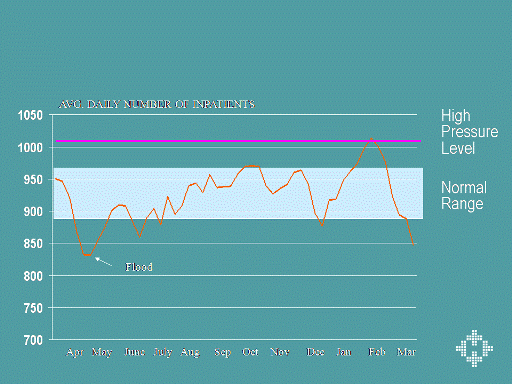 |
Average Daily
Emerg./Urg. Medical Census, 1997/98
As this figure and the previous one indicate,
high-pressure periods occurred before, during and after the downsizing of
the acute hospital sector (i.e. bed closures). Thus, such periods can be
expected to recur regardless of the number of beds in the system.
Implications:
-High-pressure periods are somewhat predictable – when they will occur, how
long they will last, the number of flu-related admissions, etc. This
information is useful for identifying ways to reduce these problems in the
future or to help the system prepare for them.
-Possible approaches to this problem include a major campaign to increase
influenza vaccination levels among high-risk groups (people aged 65 and over
and those with chronic conditions), increasing pneumococcal vaccination
rates, using alternative treatment settings, and pre-admission screening of
all medical admissions to identify those not requiring acute care services.
-This study illustrates the value of a database that links various types of
data across several years to allow longitudinal analyses
See also:
Seasonal Patterns of Winnipeg Hospital Use |
